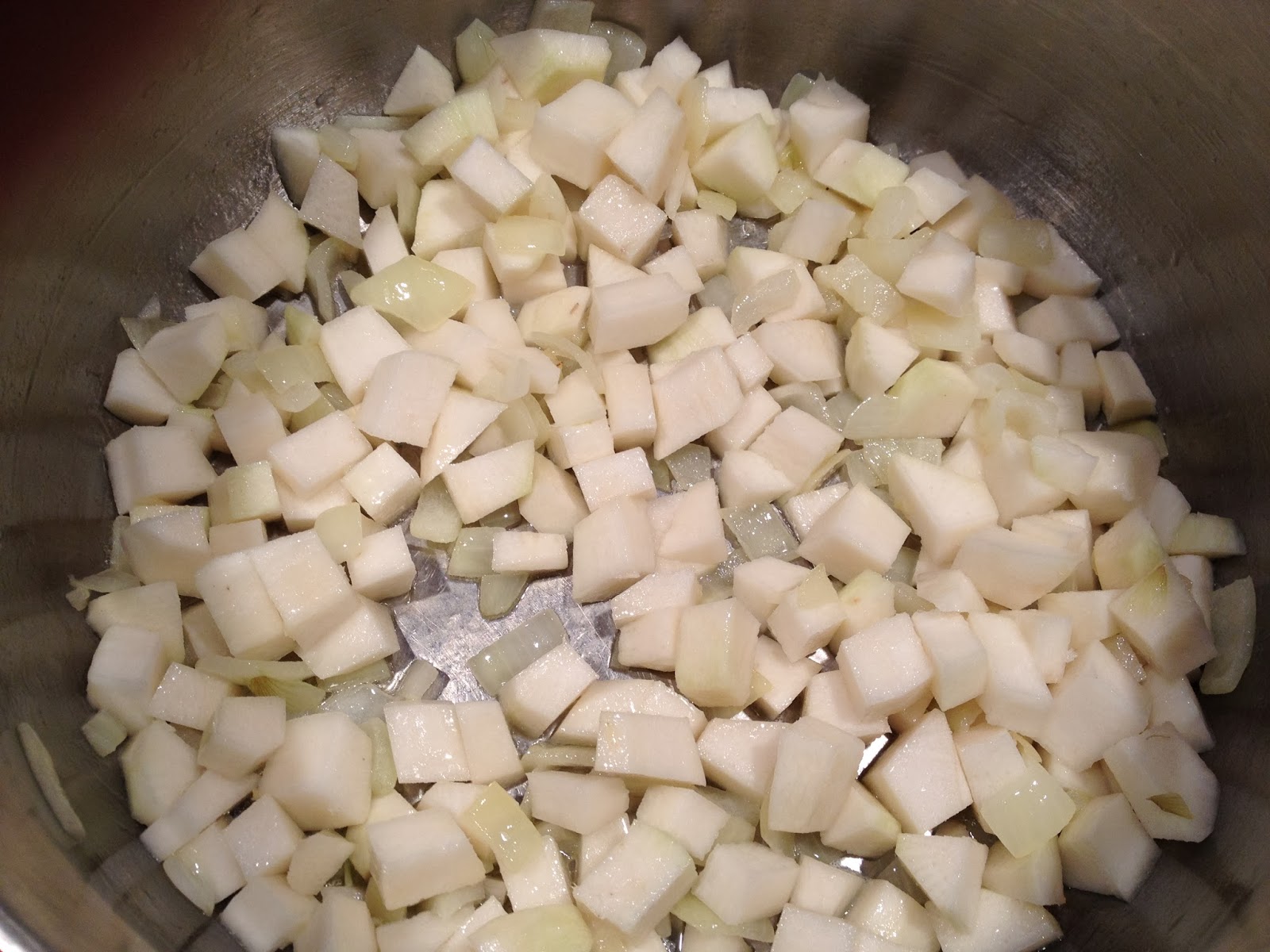Finally, a bit about the Gilfeather rutabagas in this week's share. First, they're often call turnips, which is what rutabagas are usually called in New England. They are an heirloom variety, first cultivated in Wardsboro, Vermont by a farmer named Gilfeather, in the late 19th century. They resulted from an interspecies cross between a rutabaga and a regular turnip, and luckily Farmer Gilfeather noticed, liked, and perpetuated these delicious roots. During his lifetime, FG guarded his treasure so that no one else could grow his turnips. But, somehow, thankfully, some seeds escaped his control, meaning that Gilfeather rutabagas are still grown in 2014.
Gilfeathers have white flesh and a mild, sweet taste (improved by several hard frosts before harvest last fall). They pair naturally with potatoes.
So while the name for these veggies comes from the farmer, I find it interesting that there are feathery roots on either side of the bulbs, almost like gills.
The first week that we received some in our share, the newsletter included a recipe for Gilfeather rutabaga soup. I made it that first week, and really liked it. The Gilfeathers really do have a mild taste; they aren't strong like the purple top turnips. Additionally, the soup has nutmeg in it, which I'm finding is a good way to hide some of the strong taste of veggies used in my soups. For example, I've been putting nutmeg into my kohlrabi soup, which definitely mellows the taste of the kohlrabi, making the soup less broccoli-ish.
The newsletter described where the recipe came from:
This is an adaptation of an adaptation of a turnip and brown bread soup served at a Ballyknocken House in County Wicklow. It appeared years ago, in Saveur, issue 91. Actually, it's very like country/peasant soups from around the world that use roots plus some stale bread (or nuts, or starchy rice) to make a soup that is creamier and more filling than seems possible -- and one that feeds a lot of people without much expense.I started with their recipe and modified it a bit (used bread ends instead of the center of a piece of bread, no cream).
Ingredients
2-3 tablespoons olive oil
1 medium onion, peeled and chopped
1 1/2 pounds of Gilfeather rutabaga, peeled, and cut in 1/2" pieces
2 slices of bread ends (I used sourdough this time), ripped into pieces
6 cups of vegetable stock
Freshly ground nutmeg
Salt and freshly ground pepper
Put the olive oil and onions into your soup pot, then sweat the onions for 5-10 minutes, until translucent. Note that I used olive oil the first time I made this soup, by mistake. The second time, I used the butter that was called for (in the photo below). Now that I've made and eaten the soup both ways, I prefer the olive oil to the butter, so I've put olive oil into the ingredients above. The butter version tastes too rich to me.
While the onions are cooking, prep the Gilfeathers.
Add to the pot when the onions have finished. Cook for about 10 minutes to let the Gilfeathers soften.
Add the nutmeg, salt and pepper to taste. I am a bit heavy handed with the nutmeg.
Add the torn bread ends and your stock. As I only had 4 cups of vegetable stock left, I added two cups of water to get to the full 6 cups. The soup was still flavorful with the addition of this water.
Blend the soup. I use an immersion blender, as I find it much easier than using a blender (plus no potential disaster from putting hot liquid in a blender).
After cooling the soup for a bit, I store it in jars. The jars are easy to grab for lunch and the soup can be microwaved in them (with the metal covers off, of course).
The farm newsletter notes that you can use purple top turnips as well, to add to the Gilfeathers if you don't have enough. The soup could probably be made entirely with purple top turnips, but I haven't tried to do it yet.
This process is similar to any soup I make featuring a single vegetable. Substitute kohlrabi for the Gilfeathers and you have kohlrabi soup. Roast some cubes of butternut squash and make butternut squash soup (you'd then skip the 10 minute saute of the veggie cubes -- I think the roasted squash makes for a better soup).
















































